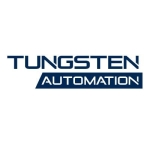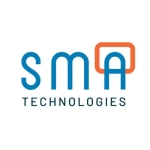What is our primary use case?
We are a platinum partner of UiPath. We work exclusively for UiPath and do implementations. We provide solutions using UiPath products.
One of the use cases was for a client from the manufacturing industry for onboarding apprentices. We did this project in India. They were onboarding 300 to 400 apprentices. Their insurance and other things were done manually, which was time-consuming. It used to take them a week to complete the whole process, which was a problem in case an accident or incident happened in the first week. They wanted to do automation to ensure that on the first day itself, after the employees are onboarded, the insurance and other tasks are completed.
How has it helped my organization?
RPA as a technology has many benefits. UiPath comes with all those benefits. In addition, you also get flexibility, the availability of resources and new features, the ability to scale up, and an excellent partner ecosystem with UiPath.
As a tool, UiPath is becoming a hyper-automation platform. Every six months, they add something new to the platform. If you want new features, you can subscribe to those. From just an RPA tool, it is becoming an intelligent automation platform. They bring everything into the same platform. When you subscribe to Office 365, you get the entire package from Microsoft. UiPath also does the same thing. They bring automation, process mining, and all other things into the same platform. You can pick and subscribe to whatever you want. You can scale up as you want.
At this point in time, everybody is looking for intelligent automation solutions. UiPath has something known as AI Center that consists of multiple machine learning models. Solutions that have the intelligence to automatically understand and make decisions are the demand of the hour. For example, earlier, invoice processing was template-based. It was done using ABBYY and other OCR tools. UiPath now has a product for document understanding that supports the customers in extracting the details of the invoices without templates. It has a machine-learning model. I have been using their AI Center or document understanding module since 2019. It matures every year. For example, in 2019, if we loaded 15 to 20 invoices, it extracted only 20% of the data, whereas now, it extracts more than 80% of the data because over time, the model has got trained, and it gives better results.
As a company, they are growing very fast. They are acquiring multiple companies. If they do not have competency in any field, they either partner with other firms or acquire them. They have recently added a communication mining product. It is something that is going to help the BPO industry a lot where call centers have many people taking the calls and rerouting them. Putting a machine learning model or a communication mining product on top of it will definitely help to reduce the effort. It will help with cost reduction and optimization of the existing operations. All the new features that they are adding are aligned with the usage of the platform as an intelligent automation platform.
UiPath also has benefits in terms of resources for implementing automation. If a customer wants to build a COE, they need to onboard resources and train them. UiPath is the easiest in terms of finding resources. For Pega Automation or SAP automation, you may not be able to find as many resources in the market as UiPath.
When clients want to automate a manual process, their expectation is that once automated, they do not want anybody to look into that process. It should run without any human intervention, but sometimes, there are scenarios where human intelligence is required to make a decision or trigger something. For example, if you do automation on a portal, there might be a captcha or multi-factor authentication where you enforce a human to come into the picture. Generally, everybody is looking for automation that runs without any human intervention. If 10 to 15 people do an activity, usually, the customer expectation is that none of those people should have to look into it, but realistically, only about 80% of those employees can be used for other tasks. 20% are still needed to monitor the system.
UiPath speeds up digital transformation. RPA is normally the first step of digital transformation because it is the technology that you can add with minimal investment. The rest of the things require much more than what is required for RPA. Digital transformation starts with identifying the right candidate for automation and putting a process or a bot to do the processing. After that, you can build AI on top to make decisions. This digital transformation does not require expensive or complex application upgrades or IT application support. If any of the processes require upgrading the existing system or additional licenses, we normally do not recommend RPA for that. We can do automation using API calls and other methods.
UiPath saves time. RPA technology is generally adopted for the reduction in FTEs and time. The time savings vary based on different engagements.
What is most valuable?
UiPath is much easier to learn than other tools. Its interface is not that complicated. It is very user-friendly. Among all other similar tools, UiPath is the one that came out last. It came out in 2016 or 2017. They had the opportunity to understand what are the best features of other tools. They also knew how to put it together so that people pick it up faster. UiPath's founders are from a technical background, so there is a developer-oriented approach, which is another benefit of this solution. In the RPA market, if you want to hire resources, you will get more UiPath developers than any other technology. If any customer wants to adopt UiPath as a tool and build a team, there are more options for UiPath. You get a bigger resource pool to select from. For other tools, you will not find that many resources. This is something that we have seen while hiring people.
UiPath Community is one of the main differentiators from other tools. You can easily compare the number of subscribers of UiPath Community or UiPath forums with Stack Overflow, but Stack Overflow is not just one tool. You have everything there. You have Java, you have Python, and you have .NET. From a technical perspective, queries related to different technologies are there. In UiPath Community, you get the same level of support. I have seen developers solving puzzles and tricky questions. About 90% of questions get answered in the community. The way UiPath promotes its community is also not unique. It is not like anybody else. I have not noticed anything similar to the MVP programs that they run in other tools. They promote people who contribute more to the forum. Anybody who is giving a solution gets marked and evaluated based on the support provided in the forum. They give them exposure on the platform. They mention their MVPs for each year, which is motivating many people. I do not think anybody else is doing that. I have a team of 120 people. I see the motivation in the team to spend an hour or half an hour on a daily basis to see if any questions are there to which they can respond to have an opportunity to get into the MVP segment. UiPath is doing a lot to ensure that there are more active users in the community and people give good suggestions and solutions.
The UiPath Academy is one of the best self-training portals. They have two types of portals. One is for everybody. Anybody can subscribe and log into it and start taking courses without paying anything. They also have another portal for partners, which has more details. They do not have static material. They update the material every six months. When they have a release, they update the information. UiPath Academy is a very good platform for self-training purposes. They also have other training programs such as instructor-led training. UiPath's training and support mechanism is excellent.
What needs improvement?
Their technical support should be improved. Their support has deteriorated with the increase in the number of customers. That is one area of improvement.
They should give the flexibility to customers to reduce the number of licenses. UiPath does not want you to reduce the number of licenses. It is not easy to reduce the number of licenses even though there is a provision to do that. It would be good to give flexibility to customers to upscale and downscale whenever they want.
For low-code development, they already have something called UiPath Apps, but it needs improvement. Generally, to build a small workflow, we use Microsoft Power Apps. Even though UiPath has a local platform, it is not comparable to the Microsoft Power Apps platform. If they invest a bit more in that, for creating workflows, we can use UiPath Apps rather than opting for a third-party tool.
For how long have I used the solution?
I have been working with UiPath since 2018.
What do I think about the stability of the solution?
Nowadays, all RPA vendors are trying to bring in something new every six months, but they don't get adequate time for doing the testing. As a result, there are multiple bugs. They should stabilize the release, do proper testing, and then only launch it. Otherwise, we need to wait for the next release for a bug to be fixed. Similarly, the training material for all established products from all the vendors is good, but with constant new releases, it is a challenge to get the latest material. They should release the training material before they start selling the product so that everybody is well aware of the features and the issues.
What do I think about the scalability of the solution?
With the cloud model, you can subscribe to whatever you want and scale up as you want. You also get the flexibility of a monthly subscription from the cloud. If you want to run automation for one month or a certain period, options are available.
If a customer is subscribed to the UiPath Cloud and wants to add more processes, they just need to ensure that they have their infrastructure on-prem for only putting the robots. The load on the Orchestrator is handled by UiPath. You do not have to worry about that, so scalability is handled by UiPath. These are no issues, but for on-premises, all these things have to be handled manually. You have to increase the storage, but from the product perspective, there is no challenge in scaling up. Today, if we run 100 processes, and tomorrow, if we need to run 1,000 processes, we just need to procure the licenses and additional hardware.
How are customer service and support?
Their support could be better. As the company grew, the number of customers increased, and their support deteriorated. When you raise a ticket, rather than addressing the concern of the client, they just want to close the ticket. It has gone to that stage. This could be because of the number of customers. It was not like this earlier.
We have been working with them for a long time. We know what questions we need to ask. Our concern mainly comes when a client contacts UiPath's customer service. Rather than asking them for additional details, they give a response saying that a particular feature is not supported and close the case. I would rate them a six out of ten at this point in time.
How would you rate customer service and support?
Which solution did I use previously and why did I switch?
I have worked on other platforms, but at this point in time, I am predominantly working on UiPath. I have worked with Blue Prism. I also have some experience with Automation Anywhere and WorkFusion.
How was the initial setup?
I have worked with the on-prem and cloud deployments. In earlier versions, the cloud model was not there. UiPath has a product called Orchestrator, which is an application web server. In on-prem installations, you had to put this application web server on a Windows Server. It then orchestrated the entire automation. You also had to install Developer SDK, called UiPath Studio, on a Windows machine. You had to connect that Windows machine to the Orchestrator tool. For running the process, you needed a bot. You installed that bot on another virtual machine or Windows machine. These were the three mandatory components earlier in 2018.
After that, they brought in the concept of cloud subscription. With the cloud subscription, they install the Orchestrator itself and give a public endpoint to the customer. The benefit is that customers do not need to install Orchestrator on their premises. They can directly connect to the Orchestrator that is hosted on their cloud platform. Of course, they have the authentication and all those things. With the cloud model, there is no requirement of installing their application server inside the environment. UiPath Studio and the bots still remain in the client environment.
Previously, anybody with Windows experience could do the installation. Our developers used to do the installation, but since machine learning came into the picture, the platform changed because Windows was not able to do the processing. Machine learning requires resources, so they converted the platform from Windows to Linux. If you now want to install Orchestrator with the machine learning model and all other things, it is not a Windows installation. It is a Linux installation, so earlier, somebody with basic Windows skills could do the installation for machine learning models and other things on-prem, but now, this cannot be done by a normal developer. Somebody with Linux experience is required for installation. However, they offer a cloud subscription where you do not need to install anything on Linux. You can directly access the endpoint and start using it. They also offer a disaster recovery tool. UiPath provides something known as HA for on-prem installation. It is a multi-node installation. This HA tool is also installed on Linux, so previously all tools were on Windows, but all the new products or tools are on Linux. They require Linux expertise for on-prem installation as well as knowledge regarding firewalls, etc. You need an infrastructure engineer for that.
UiPath provides training for different roles. They have training for developers, business analysts, solution architects, and infrastructure engineers. These are the four main roles for which they provide training, and these are the four roles that are manually required for implementing the UiPath product.
In terms of maintenance, UiPath updates the product every six months. They have two main releases. They have a spring release and a fall release. They have .6 and .10 releases. If I am installing the 2023.6 release now, they will provide support only for three years, which will be till June of 2026. After that, they will not support it, so customers need to upgrade their environment once every three years. For the on-prem setup, when you do the upgrade, you need to bring down the environment because robots are there. Once they are upgraded, you need to ensure that everything is running properly. It requires the infrastructure team and the application development team to ensure that everything is working fine. It is normally a one-month activity, but it can vary depending on the number of processes. It requires at least two weeks. In the cloud model, product upgrades happen automatically. Orchestrator is hosted in UiPath Cloud, and they upgrade it. There are no issues. You just need to take care of UiPath Studio and the robots in the machine. That can be easily handled by the application development or support team. In terms of support, the number of people required depends on the complexity and the criticality of processes. If you have automated a banking application, you may require somebody for monitoring around the clock.
What's my experience with pricing, setup cost, and licensing?
They have been increasing the price. The explanation that they provide is that they are adding more features. This works perfectly fine for customers who are looking for new intelligent automations, but there is another set of customers who use UiPath for vanilla, plain automations. Offering them something that is not required and asking them to pay more puts a burden on them. That seems to be a problem for the customers. Many of them have mentioned this concern because it is increasing the prices of automation every year, which is not acceptable to all customers.
As a company, they try to move from on-prem to the cloud. They give cloud subscriptions unless a customer specifically requests an on-prem solution. With the on-prem solution, you will not get the latest features automatically. You need to update it on a periodic basis. There is an overhead in terms of maintenance. In their new licensing model, they charge the same for the on-prem product and the cloud product. For an on-prem installation, you have the infrastructure cost in addition to the licensing cost. By going for the cloud version, you can easily skip the infrastructure cost.
What other advice do I have?
When you start your RPA journey, you should never start with just one process. You should have a pipeline in your mind in terms of the number of processes. You can start small, but you need to have a roadmap of what you are going to do by the end of the year. If you automate only one process, you will not get value from this product. Tools such as UiPath and Automation Anywhere are capable of doing so many complicated tasks. They charge you so that you can do all those things. If you do just a small task with that, your cost and your outcome will not match, and you will not appreciate the platform. That is why I recommend having a roadmap. You should also go for a tool for which you are able to get support when you get stuck. There is no question that UiPath is the easiest one.
RPA as a technology is going to be like Microsoft Excel. Soon, everybody's system will have bots to automate activities. It could be for extracting data from the internet for your analysis or for your project. It will be used for all redundant activities or rule-based processing where you have to extract the data and follow some steps. In five or ten years, it is going to be a mandatory technology.
Overall, I would rate UiPath an eight out of ten. I am not completely happy with the way they bring out new versions or features in a half-cooked state. Stability or reliability is critical when you are launching something new.
Disclosure: My company has a business relationship with this vendor other than being a customer. Partner





















